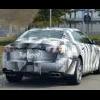Search the Community
Showing results for tags 'architect'.
-
Details matter. Whether it's work or life in general, details matter. This statement rang true during a short walking tour organised by the National Heritage Board (NHB) called Architrek Through Time: An Architectural Odyssey through Landmarks. The two-hour walking tour sounded simple enou...
-
- 1
-

-
- architecture
- architect
- (and 16 more)
-
ITE.pdf My daughrter cried when she received this unsuccessful letter from NUS sometimes this week. Its was always her dream the moment she took up this course in ITE 6 years ago. She put in alot of hard work and also TOP her ITE course with Merit of Ward for Outstanding Performanc...

